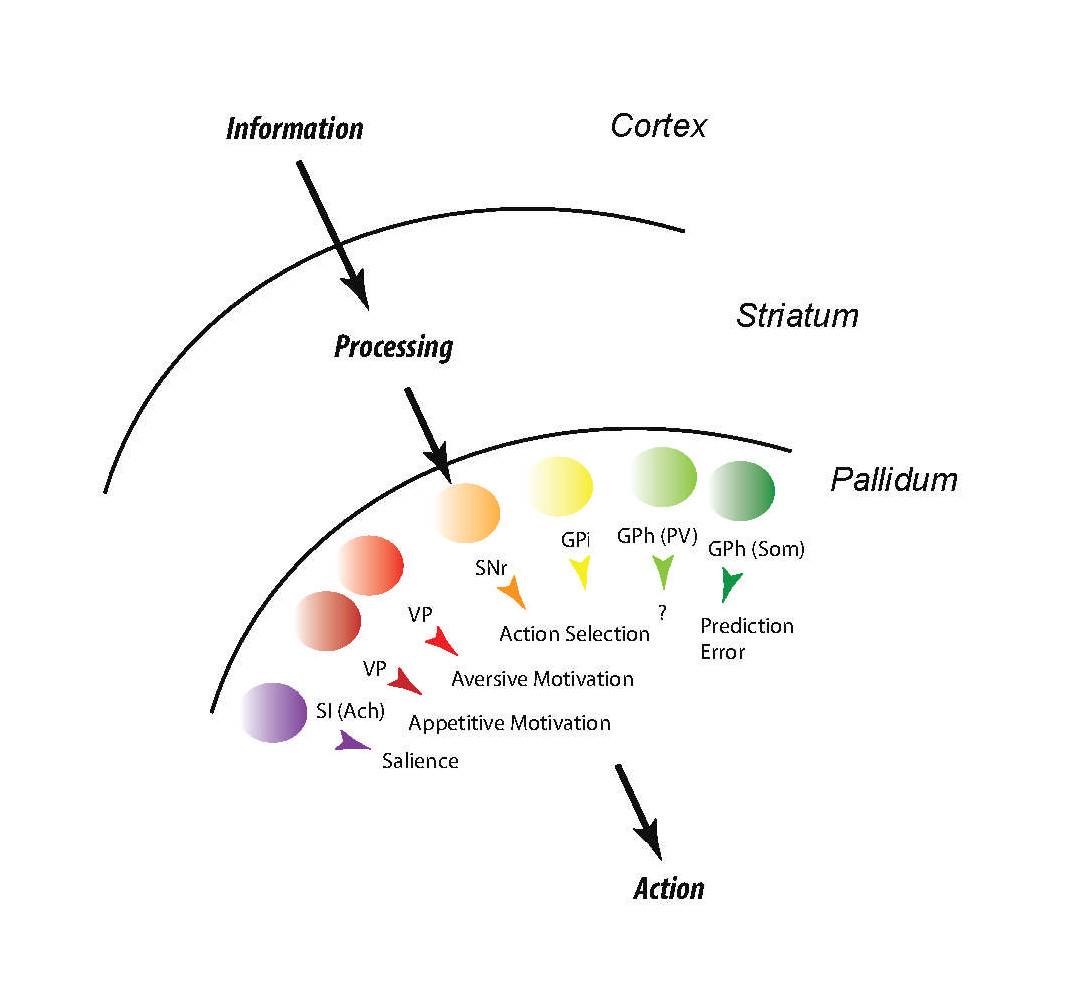
PRINCIPAL COMPONENTS OF GOAL-DIRECTED BEHAVIOUR
Stephenson-Jones Lab
Research Area
Our lab aims to understand the mechanisms by which subcortical circuits transform information about the world into purposive action. We focus on the basal ganglia since these nuclei are a key nexus where the cortical representation of the world is processed to give rise to critical aspects of goal-directed behaviour such as motivation, choice, action, and outcome evaluation.
Our experimental approach starts with designing well controlled, quantitative rodent behavioural tasks that can isolate individual components of purposeful behaviour. By combining these tasks with a wide range of technical approaches, including two-photon calcium imaging, fiber photometry, in vitro and in vivo electrophysiology, optogenetics, and intersectional viral labelling strategies, our lab is providing new insight into the principal types of information that the basal ganglia extract and the circuit mechanisms that lead to these computations.
Research Topics
1) Prediction as the basis for purposeful action
One of the underlying features of purposeful action is the ability to make predictions. These predictions serve as incentives, informing us about the potential rewards and hazards of our choices. As long as our predictions lead to expected outcomes they faithfully inform our decisions. However, when the outcome of our choices is unexpected there is a mismatch between the prediction and outcome. This mismatch acts as a critical component of learning, leading to updated, hopefully better, predictions. While predictive coding and mismatch signals are observed throughout the brain several key questions remain to be solved: How do neural circuits learn to make predictions? How do predictions motivate our behaviour or shape our choices? How is a common currency generated to compare potential costs and benefits? How are errors in prediction computed?
Our recent work has shown that two different output nuclei of the basal ganglia play distinct roles in prediction. The first, the ventral pallidum (VP), contains separate classes of neurons that predict the appetitive or aversive value of stimuli and is critical for motivating behaviour (Stephenson-Jones et al., unpublished). The second, the habenula-projecting globus pallidus (GPh), is a key site where prediction errors are calculated and is essential for reinforcement learning (Stephenson-Jones et al., Nature, 2016). In one set of projects our aim is to create a comprehensive account of the computations that additional basal ganglia output nuclei perform. In this way we aspire to map the principle types of information that are being extracted by these nuclei to support purposive action.

Scheme for the principle information extraction performed by the basal ganglia to support purposive action
2) Circuit Mechanisms for Motivation and Outcome Evaluation
An additional focus of the lab is to understand the circuits and learning rules that give rise to the elegant computational outputs of the basal ganglia. If the VP and GPh are critical for predicting the incentive value or evaluating these predictions, how was the information learnt? How are predictions and outcomes compared in the basal ganglia to generate prediction errors? How are these predictions precisely timed? How are predicted costs and benefits integrated?
These are some of the questions the lab is investigating to gain a mechanistic circuit-level understanding of how information is transformed into action.






